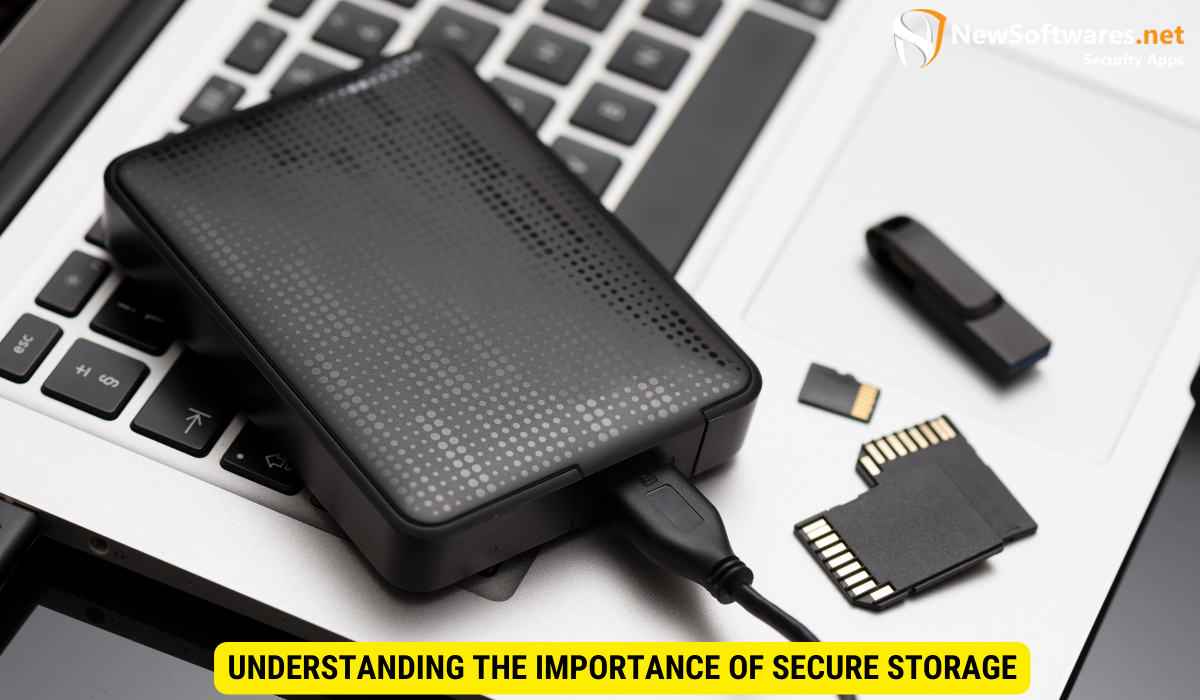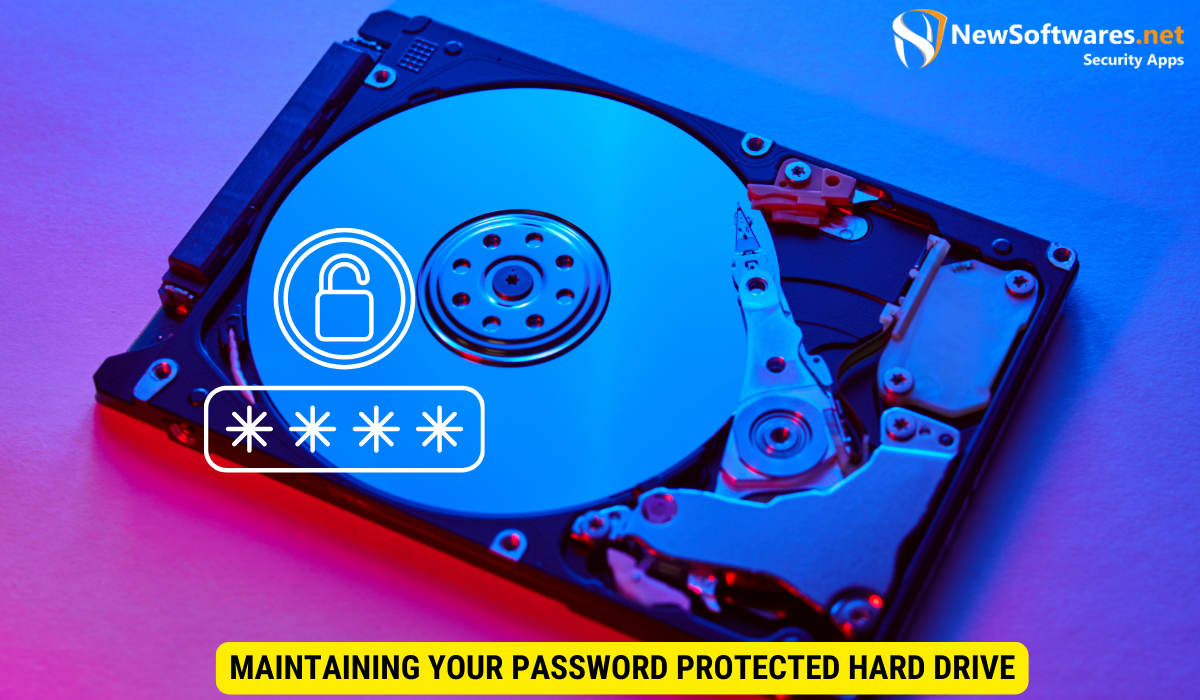Protecting your data through password protected hard drives requires thorough understanding and proper implementation of secure storage practices. Formatting a password protected hard drive is an essential step in this process, ensuring the integrity and security of your sensitive information.
In today’s digital age, the security of our personal data is of utmost importance. With the increasing prevalence of cyber threats and data breaches, it is crucial for individuals and organizations to take proactive measures to protect their sensitive information. One such measure is securing storage through the use of password protected hard drives. Together, we will explore the significance of secure storage, the basics of hard drive formatting, steps to format a password protected hard drive, choosing the right password, and maintaining the security of your password protected hard drive.
Understanding the Importance of Secure Storage

As we rely more and more on digital devices and store an ever-increasing amount of personal and sensitive data, the need for secure storage becomes evident. Secure storage not only protects your data from unauthorized access but also ensures its integrity and availability when you need it. Without proper security measures, your data could easily fall into the wrong hands, potentially leading to identity theft, financial loss, or even legal implications.
In addition to protecting personal data, secure storage is crucial for businesses that handle sensitive information such as customer records, financial data, and proprietary research. Data breaches can have severe consequences for companies, including damage to their reputation, financial losses, and legal liabilities. Implementing robust secure storage solutions is vital for safeguarding sensitive business information.
The Risks of Unprotected Data
Leaving your data unprotected is like leaving your front door wide open. Hackers and malicious individuals are constantly looking for vulnerabilities to exploit and gain unauthorized access to data. Unprotected data is susceptible to various risks, including unauthorized access, data theft, and loss due to hardware failure or ransomware attacks. It is essential to be aware of these risks and take appropriate steps to mitigate them.
Furthermore, unprotected data can also be vulnerable to accidental deletion or corruption, leading to permanent loss of valuable information. Regular data backups and secure storage practices are essential to prevent data loss and ensure business continuity in the event of unforeseen incidents.
The Role of Password Protection in Data Security
Password protection is a fundamental aspect of data security. By assigning a strong password to your hard drive, you create a barrier that prevents unauthorized access to your data. A strong password ensures that only authorized individuals can access the information stored on the hard drive, providing an additional layer of security.
It is important to follow best practices for password management, such as using unique passwords for different accounts, regularly updating passwords, and enabling two-factor authentication where possible. Strong password policies help strengthen overall data security and reduce the risk of unauthorized access to sensitive information.
Basics of Hard Drive Formatting
Before we delve into the specifics of formatting a password protected hard drive, it is important to understand what exactly hard drive formatting entails. In simple terms, formatting refers to the process of preparing a storage device, such as a hard drive, for data storage and retrieval. It involves creating a file system that organizes and manages the stored data effectively.
What is Hard Drive Formatting?
Hard drive formatting involves initializing the hard drive and setting up the necessary file system structures. This process allows the operating system to recognize and interact with the hard drive, enabling you to store, retrieve, and manage your data efficiently. Formatting a hard drive is a crucial step before using it for the first time or when you want to erase the existing data and start fresh.
Different Types of Hard Drive Formats
There are various file system formats available for hard drives, each with its own advantages and limitations. The most common file systems include FAT32, NTFS, and exFAT. FAT32 is widely compatible but has limitations on file size and disk space. NTFS offers enhanced security and supports larger file sizes and volumes. exFAT is suitable for external drives and provides compatibility across different operating systems and devices.
Steps to Format a Password Protected Hard Drive
Now that we have a basic understanding of hard drive formatting, let’s dive into the steps involved in formatting a password protected hard drive.
Pre-Formatting Considerations
Before formatting, ensure that you have created a backup of all important data on the hard drive. Formatting erases all existing data, so it is crucial to have a backup to avoid permanent loss. Additionally, make sure you have the necessary tools like a computer, USB cable, and formatting software compatible with your operating system.
Detailed Guide to Formatting Process
To format a password protected hard drive, follow these step-by-step instructions:
- Connect the hard drive to your computer using the appropriate USB cable.
- Open the formatting software on your computer and select the connected hard drive.
- Choose the desired file system format for the hard drive. If supported, select NTFS for enhanced security and compatibility.
- Set a strong password for the hard drive. Avoid using common or easily guessable passwords and ensure that it meets the password complexity requirements.
- Initiate the formatting process and wait for it to complete. This may take some time, depending on the size of the hard drive.
Choosing the Right Password for Your Hard Drive
When it comes to choosing a password for your hard drive, it is essential to prioritize security. A strong password significantly reduces the chances of unauthorized access to your data. Here are some tips to help you choose the right password:
Importance of Strong Passwords
A strong password is the cornerstone of data security. It acts as a barrier against unauthorized access and helps protect your sensitive information. A weak or easily guessable password can undermine the security measures you’ve put in place, rendering them ineffective.
Tips for Creating a Secure Password
When creating a password for your hard drive, consider the following tips to enhance its security:
- Use a combination of uppercase and lowercase letters.
- Include numbers and special characters.
- Avoid using common words or phrases.
- Avoid using personal information that can be easily associated with you.
- Make it at least eight characters long.
Maintaining Your Password Protected Hard Drive

Securing your password protected hard drive is an ongoing process. It is essential to regularly update and maintain the security of your hard drive to ensure its effectiveness.
Regular Updates and Their Importance
Keep your operating system and security software up to date to protect against the latest threats and vulnerabilities. Regular updates often include security patches and enhancements that address known issues and protect your data from emerging threats.
Dealing with Potential Threats and Breaches
In case of potential threats or breaches, it is important to take immediate action. Notify the relevant authorities and follow the necessary steps to mitigate the impact of the breach. Be vigilant and monitor your hard drive for any suspicious activities or signs of unauthorized access.
Key Takeaways
- Secure storage is crucial in protecting personal and sensitive data from unauthorized access and potential risks.
- Hard drive formatting prepares the storage device for data storage and retrieval, creating a file system for efficient data management.
- Choosing a strong and unique password is vital for the security of your password protected hard drive.
- Maintaining the security of your password protected hard drive involves regular updates and prompt action in the face of potential threats and breaches.
FAQs
Q1: Does formatting a hard drive erase all data?
A1: Yes, formatting a hard drive erases all the data stored on it. It is important to create a backup of important data before proceeding with the formatting process.
Q2: Can I format a password protected hard drive without the password?
A2: Generally, you cannot format a password protected hard drive without providing the correct password. Password protection is designed to ensure that only authorized individuals can access and manipulate the data stored on the hard drive.
Q3: What happens if I forget the password of my password protected hard drive?
A3: If you forget the password of your password protected hard drive, it can be challenging to access the data stored on it. In such cases, you may need to seek professional assistance or utilize data recovery solutions that specialize in password protected hard drives.
Q4: Can I change the password of a password protected hard drive?
A4: Yes, it is possible to change the password of a password protected hard drive. This can typically be done through the software or tools provided by the hard drive manufacturer.
Q5: Is password protection enough to secure my data?
A5: While password protection is an important security measure, it is not the only aspect to consider. It is recommended to implement multiple layers of security, such as encryption, regular backups, and antivirus software, to enhance the overall security of your data.
Conclusion
Securing storage through the formatting of password protected hard drives is an essential step in ensuring the confidentiality and integrity of your data. By understanding the importance of secure storage, the basics of hard drive formatting, and the steps involved in formatting a password protected hard drive, individuals and organizations can better protect their digital assets from unauthorized access and potential risks.
